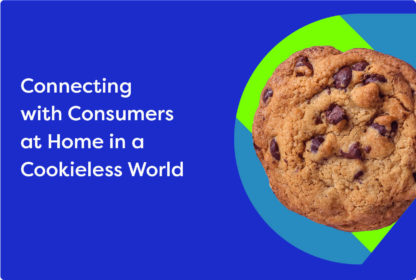Life is full of missed opportunities. Many of us have spent sleepless nights pondering a lost love, a path not taken, or a regrettable decision. But for brands, missed opportunities can be minimized by reaching out to customers who would have otherwise been lost. Programmatic Direct Mail retargeting is an excellent example of such an approach.
The advertising market for both Traditional and Programmatic Direct Mail is expected to grow to $72.67 billion by the end of 2022. And as digital fatigue begins to set in across the globe, a physical piece of marketing mail from a brand can be a welcome form of communication. That’s where Programmatic Direct Mail (PDM) comes in.
Programmatic Direct Mail is a performance marketing channel that leverages machine learning and automation. It’s informed by massive sets of real-time intent and offline data to engage consumers at home with highly-relevant physical media.
Retargeting consumers offline via the PDM channel can be a powerful compliment to your digital retargeting strategy. But it only works if you know how to use it. Let’s delve into what Programmatic Direct Mail retargeting is, how it works, and how your business can get started.
Let’s dig in.
What is Programmatic Direct Mail Retargeting?
Programmatic Direct Mail helps brands send physical marketing mail to consumers with the highest likelihood to convert. Applying online behavioral data and automated workflows allows a brand to execute marketing programs that are both highly-relevant and timely. And they can do so in a far more nimble and scalable fashion than ever before.
Retargeting is a strategy in which brands send marketing communication to people who have already taken action with their business. This could include visiting their website and/or placing a product in their cart.
Programmatic Direct Mail retargeting means sending physical mail to consumers that have already taken an action with your brand. This takes two strategies that already improve ROI and conversion rates and blend them together. Doing so creates the quintessential marketing strategy for driving performance.
How Does Programmatic Direct Mail Work in Tandem with Digital Retargeting?
Programmatic Direct Mail retargeting is a revolutionary approach that helps combat digital fatigue while also improving conversion rates. By reaching consumers that are already well-versed with your brand with relevant physical media, you’re able to give them time to consider your offer in their own home before they commit to making a purchase.
Combining this tactic with the immediacy of digital retargeting lets you cater to consideration cycles of varying lengths. It also provides a touchpoint that doesn’t rely on a person being connected to a screen. This can be a powerful combination.
PebblePost conducted a study of nearly 500,000 households in partnership with a digital retargeting platform to gauge how these two tactics can work together. When comparing the results to a holdout group (a statistically significant selection of the website visitors being retargeted), the lift in conversion rates were pretty astounding:
- Households that were served digital retargeting ads alone had a 45% conversion rate lift.
- Households that received a piece of PDM retargeting mail alone had a 152% conversion rate lift.
- Household that saw both had a 290% conversion rate lift
All that to say that while digital retargeting and PDM retargeting are both great ways to drive performance on their own, using them together delivers the best results by far.
How to Execute Programmatic Direct Mail Retargeting
There are two main methods for executing this PDM retargeting strategy: rules-based with triggers or intent-based with machine learning.
To implement these:
- Rules-based with triggers: An automated strategy where you create “trigger” that sends a piece of mail (similar to an email marketing automation) based on whether or not someone has taken an action on your website.
- Intent-based with machine learning: An machine learning driven strategy that takes large scale data about all website visitors and uses it to create household-based audiences based on their conversion potential.
Both tactics can be successful, and brands can employ both tactics at once to see which generates the best results. Each tactic also has its own benefits and drawbacks.
Rules-based PDM retargeting is a great way to re-engage customers who may have visited your site or started making a purchase but didn’t finish. However, it’s its a bit more of a blunt instrument when compared to intent-based retargeting, as adding something to a cart or pressing a button on a website is not always to best proxy for purchase intent.
Intent-based PDM retargeting tends to be much more targeted and efficient, allowing brands to scale performance more quickly. It does, however, require a very large sample size of data to effectively optimize performance. So if you’re looking to retarget based on a single page on your website with very specific messaging, you might find more success with a rules-based approach.
Get Started with Programmatic Direct Mail Retargeting Today
Marketers need a full toolkit to create and implement the strongest possible marketing strategy. PDM retargeting allows companies to make intelligent marketing decisions from the comfort of their home, which can have a big impact. Learn more about how Programmatic Direct Mail retargeting can be a great strategy for your business.



